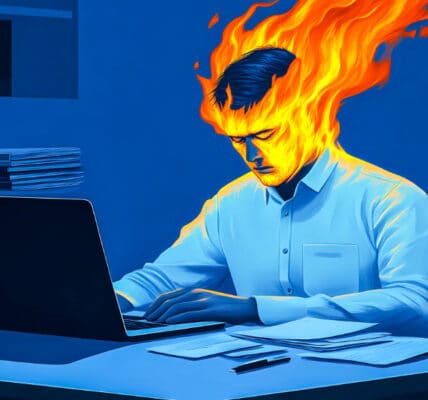The Short Video Addiction Scale

In a sign of the times, and an indication of the popularity of TikTok and other short video apps, a team of researchers in China has developed a Short Video Addiction Scale to help determine how badly kids are hooked on short videos.
It’s interesting that this study comes from China, home to TikTok, which is also banned in China. How is it that China is allowed to export a product deemed too dangerous to use at home? Even without TikTok, China has a short video problem. The researchers explain:
Short video platforms have become the most commonly used apps among minors, with a usage rate as high as 65.3%… The hedonistic characteristics of short videos attract excessive use among users. Consequently, short video addiction has emerged as a new public health issue.
Researchers mostly affiliated with Central China Normal University in Wuhan recruited nearly 1,500 middle school students to participate in the study. The study involved two parts. The first part was an attempt to understand the psychology of short video addiction and involved 16 junior high school students and two 8th grade teachers. Interviews were conducted around five main issues:
- Psychological and behavioral manifestations of compulsive short video viewing
- Uncontrolled behaviors induced by short video usage
- Attention disorders caused by short video usage
- Interpersonal relationship difficulties triggered by short video usage
- Learning adaptation challenges resulting from short video usage
In a loop that has become quite familiar to us at AddictionNews, students say they turn to short videos to alleviate stress. It then causes stress when their access to devices is restricted. This pattern is quite similar to nicotine addiction, gambling addiction, porn addiction, eating addiction, alcohol addiction, and possibly every substance use disorder and behavioral disorder.
Access to videos during nocturnal hours was found to be particularly damaging to performance at school. Researchers found “a decline in cognitive functions and memory retention among students, adversely impacting academic performance.” In particular, students were found to be mentally “revisiting” video content rather than paying attention in class.
Students with compulsive viewing issues find it nearly impossible to regulate their use of devices to agreed-upon limits. Researchers note that “attempts to reduce or discontinue viewing frequently result in failure, leading to increased psychological strain and emotional fatigue.”
Completion of the first study led to a series of studies to refine the Short Video Addiction Scale for Middle School Students. These studies took the form of questionnaires completed anonymously by 1,009 students. They resulted in a 54-point scale that was then reduced by a panel of experts to a 39-point evaluation in five areas:
- Academic Procrastination
- Interpersonal Strain
- Social Communication Difficulties
- Attention Concentration Difficulties
- Impaired Control
Researchers then compared the 39-point assessment for fidelity to five other commonly used assessments, resulting in a narrowing to these 15 questions, rated on a 5-point Likert scale from (1) Never to (5) Always:
- Watching short videos has made me increasingly impatient with other activities (such as conversations, reading, etc.).
- While talking with family/friends/classmates, I ignore what they are saying because I am busy watching short videos.
- I have reduced communication with my family/friends/classmates because of watching short videos.
- I feel that my language expression ability has declined due to watching short videos.
- I delay starting my homework because of watching short videos.
- I watch short videos while doing homework, which prolongs the time needed to complete it.
- I spend more time watching short videos than I initially planned.
- After watching short videos, I find it hard to focus on other tasks.
- After watching short videos, I find it difficult to refocus on studying.
- Watching short videos makes it hard for me to concentrate on tasks that require prolonged thinking or studying.
- My parents/friends/classmates think that my academic performance has declined because of watching short videos.
- My parents/friends have expressed dissatisfaction or complaints because I watch short videos.
- I have argued with my parents/friends because of watching short videos.
- I have tried to control/stop my short video watching habits, but I have failed.
- I cannot immediately stop watching short videos to do other things.
Researchers then went back to see if their evaluations based on these 15 questions led to the same conclusions as the analyses based on the 39-point scale and the original 54-point questionnaire. The fit was excellent. The researchers summarize the value of the Short Video Addiction Scale for Middle School Students:
Its structured framework enables educators and clinicians to identify at-risk students early, guiding targeted interventions to mitigate adverse academic, social, and psychological impacts.
Just last week, CBS News interviewed Dr. Brent Nelson, a psychiatrist and Chief Medical Information Officer for Newport Healthcare, a California-based healthcare giant operating a nationwide network of mental health treatment centers for teenagers. Dr. Nelson explained, using fMRI images, how the brains of compulsive video users are constantly busy, even when they are not engaged in watching videos.
With this new Short Video Addiction Scale, parents, teachers and social workers have a more reliable, nuanced tool for determining a child’s level of dependency and what interventions might be needed for course correction.
Written by Steve O’Keefe. First published March 31, 2025.
Sources:
“Short video addiction scale for middle school students: development and initial validation,” Nature Scientific Reports, March 22, 2025.
“Smartphone addiction is leading to ‘brain rot,’ doctors say,” CBS News, March 20, 2025.
Image Copyright: Iakov Filimonov.




